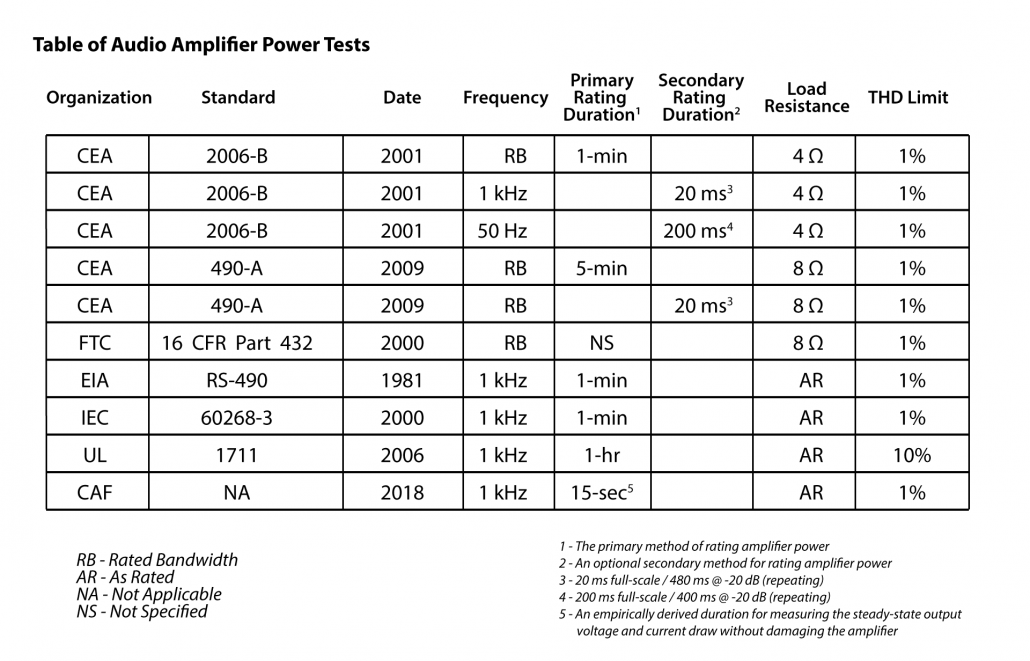Comparison of Standards for Amplifier Power Ratings
by Pat Brown
Finding information on amplifier power standards on the Internet is a challenge. Much of the information is anecdotal and subject to interpretation. I conducted some research to produce a concise comparison of how amplifier power is rated by the various standards. Where possible I have purchased the standard and made a best effort to interpret what it describes. The following table presents the results of my investigation.

It should be noted that most of these standards go far beyond amplifier power ratings. There are additional details that should be considered in some cases, and the reader is encouraged to purchase and interpret the standard for themselves in cases where those details can matter.
Continuous Sine Testing
It may be surprising that the primary rating method for all of the standards uses a continuous sine wave. This can be traced back to late last century when the Federal Trade Commissions intervened to protect consumers from misleading power ratings. The continuous sine test into a stated resistance at a stated distortion limit is the only unambiguous test for rating amplifier power. The CEA standards provide secondary methods (burst testing) to augment the continuous sine test results. This is to reveal the “dynamic headroom” that some amplifiers have beyond their continuous sine wave output power.
The CAF Philosophy
There are valid objections to continuous sine wave testing. Most amplifiers designed for speech and music systems will never have to hold a sine wave at rated power for 1-minute or longer. Some amplifiers can actually be damaged by this test. The Common Amplifier Format suggests an abbreviated test of 15-seconds duration. This is long enough to get a meaningful picture of the amplifier’s output capability, regulation, and protection without blowing fuses, tripping circuit breakers, and possibly damaging the amplifier. It is entirely likely that a music system amplifier will need to hold a tone at rated power for 15 seconds sometime in its life span. The CAF allows a longer duration test if desired by the manufacturer. The duration is stated in the I/O Matrix. This test, along with a burst test paints a more complete picture of an amplifier’s performance. The CAF requires both.
If I have missed something or made an error please leave a comment below. I appreciate your input and will be glad to investigate further. pb

Leave a Reply
Want to join the discussion?Feel free to contribute!